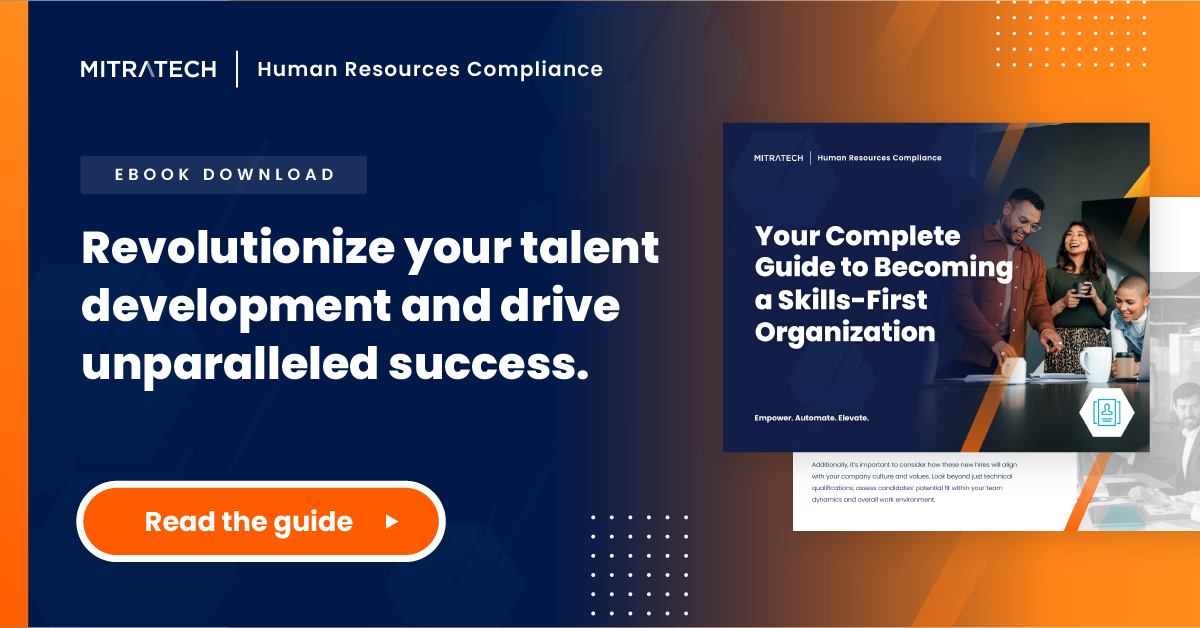Future-Proofing Skills: Anticipating Industry Trends in L&D
Learning and Development (L&D) is a fast-paced world where staying ahead of the curve is essential for success and retention efforts. As industries evolve and adapt, so must those responsible for training and developing employees. Anticipating industry trends in L&D is not just a nice-to-have skill; it’s crucial for future-proofing and keeping your workforce sharp.
In this blog post, we will explore the top 10 learning and development trends to watch out for in 2024. From digital transformation to gamification, personalized learning to virtual reality, we’ll cover all the exciting advancements shaping the future of L&D. You don’t have to embrace everything on this list, but knowing about it can help you optimize your own training plans.
Why it’s important to anticipate industry trends in L&D
Why is it essential to anticipate industry trends in Learning and Development (L&D)? Anticipating industry trends allows L&D professionals to adapt their strategies and ensure they are providing relevant and effective learning experiences.
By staying informed about emerging trends, L&D teams can proactively address the changing needs of learners. This helps them develop future-proof skills that align with organizational goals and objectives. Anticipating industry trends also enables L&D professionals to leverage new technologies, methodologies, and approaches that enhance the learning experience.
Furthermore, keeping up with industry trends fosters innovation within an organization. By embracing new ideas and practices early on, L&D professionals can introduce cutting-edge techniques that drive learner engagement and performance.
Top 10 Learning & Development (L&D) Trends to Watch in 2024
There are so many trends in learning and development, and many of them will pop up in discussions for a few weeks or months, and then they go away again (only to pop up again in a few years).
However, we see these ten learning and development trends as the ones that will stay throughout 2024 and into the future.
Digital transformation
Digital transformation has become a buzzword in almost every industry, and the field of L&D is no exception. As technology advances at an unprecedented rate, organizations recognize the need to embrace digital solutions for their learning initiatives.
In the context of L&D, digital transformation refers to leveraging technology to enhance the learning experience and improve training outcomes. This can involve integrating online platforms and tools into traditional training methods or even transitioning entirely to virtual learning environments.
One key aspect of digital transformation in L&D is making content more accessible and interactive. Online platforms and mobile apps allow learners to access training materials anytime, anywhere, allowing greater flexibility and convenience. Additionally, interactive features such as quizzes, simulations, and gamification elements make learning engaging and enjoyable.
Another important element of digital transformation is data analytics. By tracking learner progress and performance metrics through learning management systems (LMS), organizations can gain valuable insights into the effectiveness of their training programs. This data-driven approach enables targeted interventions to address knowledge gaps or optimize course content.
Embracing digital transformation in L&D allows organizations to keep pace with rapidly evolving technological advancements while improving the efficiency and effectiveness of their training initiatives.
Microlearning
Microlearning has been gaining significant traction in Learning and Development over the past few years. With our increasingly busy lives and shorter attention spans, microlearning offers a convenient and effective solution.
So, what exactly is microlearning? It refers to delivering small bursts of targeted information or learning content to learners in short and focused sessions. These bite-sized modules can be accessed on various devices such as smartphones, laptops, or tablets.
One of the key advantages of microlearning is its ability to cater to individual learner needs. By breaking down complex topics into smaller chunks, it allows learners to absorb information at their own pace. This personalized approach enhances engagement and retention levels significantly.
Moreover, microlearning promotes just-in-time learning, where employees can quickly access specific pieces of information whenever they need it. This flexibility not only saves time but also ensures that knowledge is applied immediately in real-world scenarios.
Integrating microlearning into your L&D strategy will undoubtedly future-proof your organization by providing flexible, personalized, and easily accessible learning experiences.
Personalized learning
Personalized learning is revolutionizing the way we approach education and training. With advancements in technology, it has become easier to tailor learning experiences to meet the unique needs and preferences of individual learners.
One key aspect of personalized learning is customization. Learners have the ability to choose what they want to learn, how they want to learn it, and at their own pace. This level of flexibility empowers individuals and helps them take ownership of their learning journey.
Another benefit of personalized learning is its focus on relevance. By understanding each learner’s specific goals and interests, content can be curated to align with their needs. This enhances engagement and increases retention, as learners are more likely to connect with material that resonates with them personally.
Collaborative Learning
Collaborative learning is a powerful approach that has gained significant traction in recent years. It emphasizes the value of collective knowledge sharing and teamwork, where learners work together to solve problems, exchange ideas, and build upon each other’s expertise.
In collaborative learning environments, individuals are encouraged to actively participate and engage with their peers. This can take various forms, such as group projects, case studies, discussions, or even virtual collaboration through online platforms. The goal is to foster a sense of community and create opportunities for learners to learn from one another.
One key benefit of collaborative learning is its ability to enhance critical thinking skills. By engaging in meaningful discussions with others who have different perspectives and experiences, learners are exposed to new ideas and alternative viewpoints. This not only expands their understanding but also encourages them to think critically about the subject matter at hand.
Gamification
Gamification is a buzzword that just hasn’t gone away – even if some thought it would. It involves incorporating game elements and mechanics into non-game contexts to enhance engagement, motivation, and learning outcomes.
One reason why gamification is becoming increasingly popular in L&D is its ability to make learning more enjoyable and interactive. By introducing challenges, rewards, leaderboards, and badges, learners are motivated to actively participate in the learning process. This element of competition fosters a sense of achievement and encourages learners to strive for continuous improvement.
Mobile Learning
Mobile learning is a growing trend, revolutionizing how people acquire knowledge and skills – particularly younger employees.
With just a smartphone or tablet in hand, learners can access educational content anytime, anywhere. Whether it’s watching instructional videos during their daily commute or completing interactive quizzes during lunch breaks, mobile learning offers flexibility and convenience like never before.
One of the key advantages of mobile learning is its ability to cater to individual needs and preferences. Learners can choose when and where they want to engage with the material, allowing for personalized learning experiences tailored to their own pace and interests.
Moreover, mobile apps offer various interactive features, such as gamification elements or social collaboration tools that enhance engagement and motivation.
On-Demand Learning
On-demand learning is revolutionizing the way we acquire knowledge and skills. With the rise of technology and the internet, learners now have access to many resources that can be accessed anytime, anywhere.
One of the key advantages of on-demand learning is its flexibility. Learners are no longer restricted by time or location when it comes to accessing educational content. Whether it’s watching a tutorial video on YouTube or taking an online course at their own pace, individuals can customize their learning experience based on their personal preferences and schedules.
Moreover, it allows for continuous learning and upskilling. Professionals who want to stay relevant in their industry can easily find relevant courses that cater to their specific needs and interests. This enables them to enhance their existing skill set or learn new ones without having to enroll in full-time programs or take time off work.
Furthermore, On-Demand Learning promotes self-directed learning. Learners have greater autonomy over what they choose to study and how they approach it. They can focus on areas that interest them most and skip over topics they are already familiar with, resulting in a more efficient use of their time.
AI and Machine Learning
Artificial Intelligence (AI) and Machine Learning are revolutionizing the world of learning and development. With their ability to analyze vast amounts of data, AI algorithms can identify patterns, predict learner behavior, and deliver highly personalized learning experiences.
By leveraging AI-powered platforms, companies can create adaptive learning paths that cater to individual needs. This means that employees no longer have to waste time on irrelevant content but can focus on what they need to improve their skills.
Machine Learning algorithms also provide valuable insights into how learners engage with content. By tracking their progress and preferences, L&D professionals can identify gaps in knowledge or areas where additional support is needed.
See more about AI in HR in this blog.
Mentorship
Even as we continue to learn about technology, the old-fashioned approach of learning from those who have done it before cannot go away. As organizations recognize the value of experiential learning and knowledge transfer, mentorship programs are emerging as a powerful tool to foster growth and development.
Mentorship bridges the gap between theory and practice by providing individuals with personalized guidance from seasoned professionals who have already walked the path they aspire to tread. It goes beyond traditional training methods by offering a safe space for learners to ask questions, seek advice, and gain insights from someone who has navigated similar challenges.
Mentors act as trusted advisors, sharing their experiences, lessons learned, and best practices. This not only accelerates individual learning but also helps cultivate critical thinking skills and problem-solving abilities.
Data Analytics
For HR leaders today, data is king. Organizations across industries are collecting massive amounts of data on a daily basis. But what good is all this data if it’s not utilized effectively? That’s where data analytics comes in.
For training and development, data analytics plays a crucial role in shaping training programs that truly deliver results. By analyzing learner behavior, performance metrics, and feedback, L&D professionals can optimize their programs for maximum impact.
Furthermore, by leveraging predictive analytics techniques such as machine learning algorithms, L&D professionals can anticipate future learning needs and provide personalized recommendations to learners.
Data analytics also helps organizations evaluate the effectiveness of their training investments by measuring ROI (Return on Investment). It provides concrete evidence of how training initiatives contribute to business outcomes such as improved productivity or reduced costs.
Creating a Future-Ready Learning Ecosystem
As we look ahead to the future of Learning and Development (L&D), it’s clear that staying on top of industry trends is crucial for success. The landscape of L&D is continuously evolving, driven by advancements in technology, changing learner preferences, and the need to deliver effective training in a rapidly changing world.
By anticipating industry trends in L&D, organizations can proactively adapt their strategies and ensure they are equipped with the skills and knowledge needed to thrive. From digital transformation to personalized learning, collaborative learning to virtual reality, there are numerous exciting trends shaping the future of L&D.
So let’s embrace change, harness cutting-edge technologies, foster collaboration among learners, personalize our approaches, utilize analytics effectively – all while keeping one eye firmly fixed on what lies ahead! Together, we can shape a bright future for Learning & Development! To schedule a demo of Trakstar Learn, click here.
Our focus? On your success.
Schedule a demo, or learn more about Mitratech’s products, services, and commitment.




